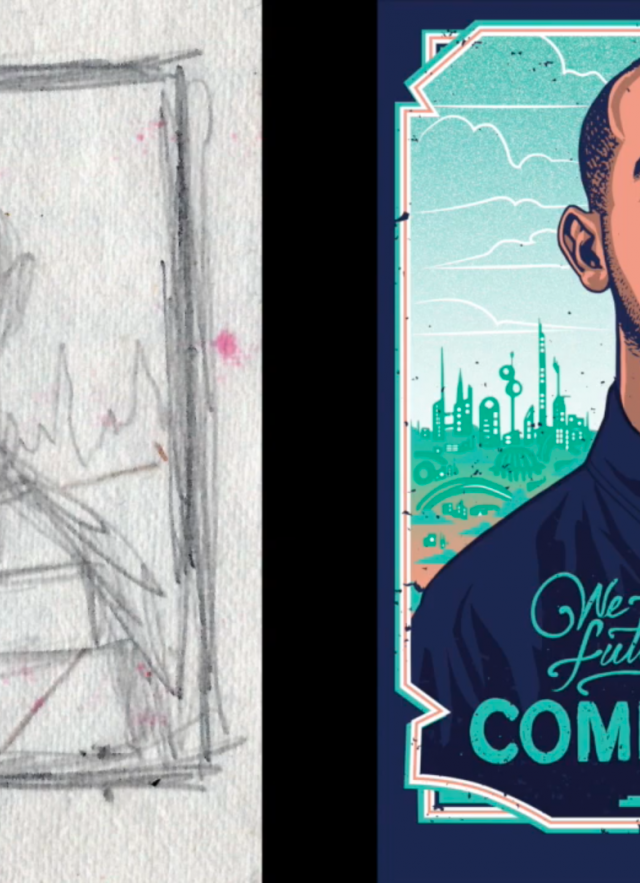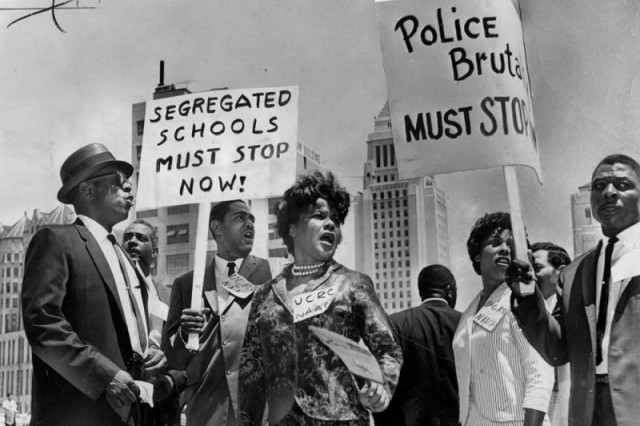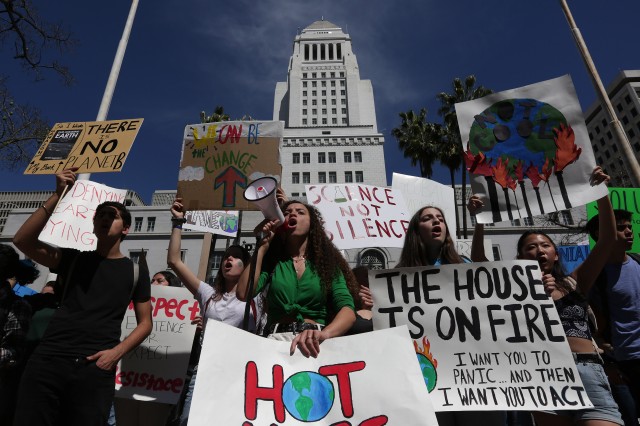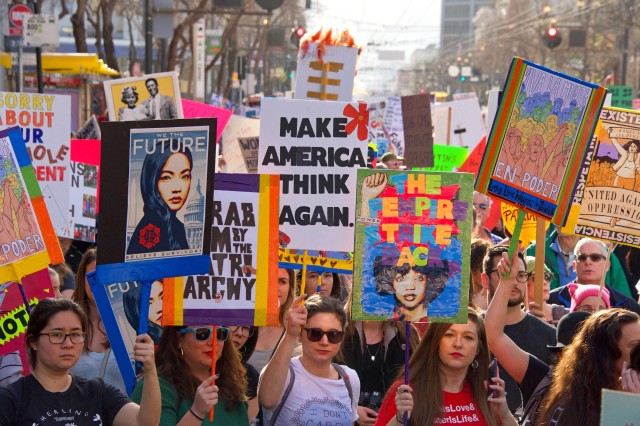Posters of Positivity

SUGGESTED FOR ALL AGES
This activity comes from one of our community partners, artworxLA, a local arts non-profit combating the high school dropout crisis by creatively engaging alternative education high school students. Watch as artist Michael Alvarez shares his lesson on Posters of Positivity, and then create your own poster - inspired by Rise Up L.A.: A Century of Votes for Women!
The Power of Posters!
Rise Up L.A.: A Century of Votes for Women tells the story of the last 100 years of continued struggle since the ratification of the Nineteenth Amendment, which officially granted women the right to vote on August 18, 1920. The exhibit will feature more than 100 objects—including political buttons, protest posters, fliers, and ephemera—and stories about choices women faced in a century of struggle. Posters, like those showcased in the exhibit, can be a powerful way to make a message seen and heard. They have been an important tool used by many activists across Los Angeles in advocating for equality on the front lines, as well as through everyday acts of bravery and courage.
Take a look at the posters being used by women in the following images. As you look, consider the following questions:
- What’s going on in these pictures?
- What messages are being shared? What images or symbols are being used?
- How are the posters similar or different from one another?
Materials
- Poster (something to write/draw your message on, such as poster board, blank paper, cardboard, or even a cereal box all work well!)
- Pencil (to sketch out your design)
- Markers or paint (bold colors will help make your message visible from afar)
Instructions
1. Choose your message.
Think about a cause that is important to you that you would like to share a positive message about.
2. Find your style inspiration.
Look at the images above, or browse the website Amplifier mentioned in the video, to get inspired by other artists.
3. Sketch your basic design.
Create a small draft, or “thumbnail sketch,” to figure out your poster’s composition (or the placement /arrangement of visual elements). This can include an image or symbol that represents your cause and any text that further amplifies your message. Try out a few thumbnail sketches until you find one that you like!
4. Use bold colored markers or paints to make your message clear.
Think about what kind of color scheme (or the overall selection of colors in your artwork) will help share the tone of your message. Then, use those colors to fill in your poster.
5. Share your message!
Share your poster with the people in your family, in the window of your home, or even on social media!




